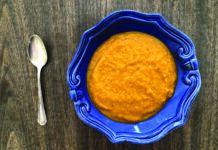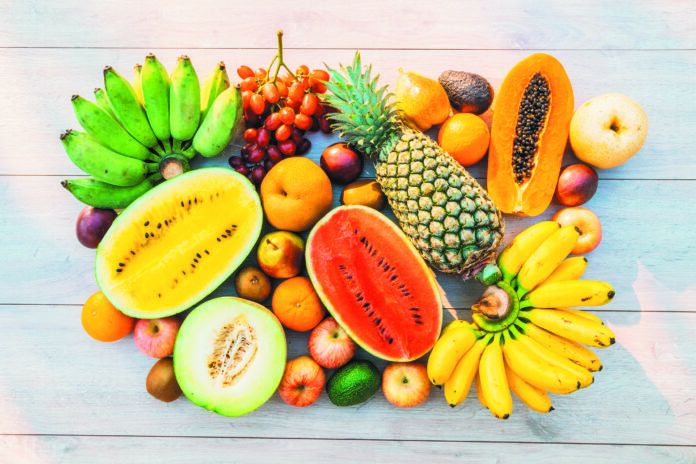Only around 12 percent of U.S. adults consume the recommended one-and-a-half to two cups of fruit a day. Trying something new is a fun way to increase your fruit intake. If you’re not sure where to begin, give one of these a try.

Papaya. This melon-like fruit is wrapped in a thin, tough skin of green, yellow, or orange and its smooth, juicy flesh surrounds a cluster of small, black seeds. Hawaiian papayas are small (about one pound) and pear-shaped with orange or pink flesh. They are ripe when they’re mostly yellow. The much larger Mexican variety will have green-yellow skin with shades of yellow, orange, or pink flesh that’s less sweet than the Hawaiian. They can be up to 15 inches long and weight up to 10 pounds.
Leave at room temperature to ripen. Ripe papaya will give to gentle pressure. To prepare: peel, split down the middle the long way, and remove the seeds. Eat as is, drizzled with lime juice, added to salads and smoothies, or as a side dish baked, boiled, or stuffed. Fill the hollow with plain fresh or frozen yogurt and top with nuts or granola for breakfast or dessert.
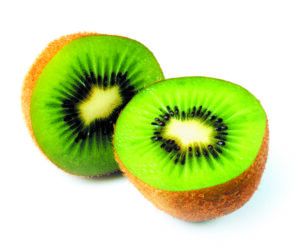
Kiwi. This China native is known for its fuzzy brown skin and vibrant green or gold flesh adorned with artistic rings of tiny black edible seeds. Similar in texture to strawberries, kiwis have their own unique, almost tropical, sweet flavor.
A one-cup serving has more than two and a half times the DV of vitamin C (that’s more than in the same amount of orange), 16 percent DV of potassium (more than a banana), 89 percent DV of vitamin K, 11 percent DV folate, and 21 percent DV dietary fiber.
Choose firm, unblemished fruit. They’re ready to eat when they give to slight pressure. Ripen on the counter if needed. Enjoy kiwi (peeled or unpeeled) sliced, or cut it in half and scoop out the flesh with a small spoon. Toss in salads or add to fruit salads and tarts.
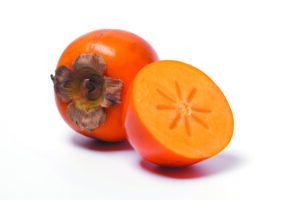
Persimmon. There are hundreds of varieties of persimmons, known for their deep orange hue and intensely sweet flavor. The most common in the U.S. market are the Japanese Hachiya and Fuyu. The acorn shaped Hachiya are highly astringent if eaten before they are fully ripened to a very soft flesh. The Fuyu is tomato-shaped, firm, and non-astringent.
One two-and-a-half inch diameter persimmon delivers 55 percent DV of vitamin A, 30 percent DV of manganese, 24 percent DV of dietary fiber, and 21 percent vitamin C.
It may be wise to purchase Hachiyas a bit under-ripe and allow them to fully soften at home. Fuyus can be eaten firm or when they give slightly to pressure. Enjoy Hachiyas in persimmon pudding, baked into breads, or stirred into a warm bowl of whole grain oats or plain Greek yogurt. Eat Fuyus like an apple, peeled or not, or try them in salads, stir-frys, salsa, or dipped into plain yogurt.
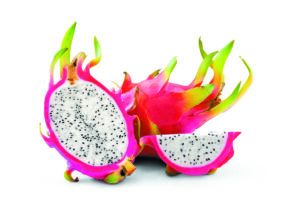
Dragon Fruit. Dragon fruit is actually the fruit of a cactus. The most common varieties are oval shaped with red or hot-pink skin with “scales” curling off the body. The flesh is pink or white and speckled with tiny, edible black seeds. There is also a yellow skinned variety with white flesh and sweeter taste. The flavor is often described as a cross between a kiwi and a pear. Let dragon fruit ripen on the counter until the flesh gives a little bit.
A one-cup serving of cubed dragon fruit delivers a host of nutrients, like 14 percent DV dietary fiber, 10 percent DV vitamin C, and 10 percent DV of magnesium. Choose fruits with bright skin and few brown spots. Ripe fruits give slightly when squeezed.
Slice fresh fruit in half and scoop the flesh out of the inedible skin with a spoon. Cut into cubes and enjoy as is, or add to salads, smoothies, or yogurt.
Image ©.Siraphol Siricharattakul / EyeEm | Getty Images
Trying new fruits is a tasty and nutritious way to increase intake and liven up your plate.
Image ©.Boonchuay1970 | Getty Images
Image ©.Joff Lee | Getty Images
Image ©.Phornphan Pradittiemphon / EyeEm | Getty Images




